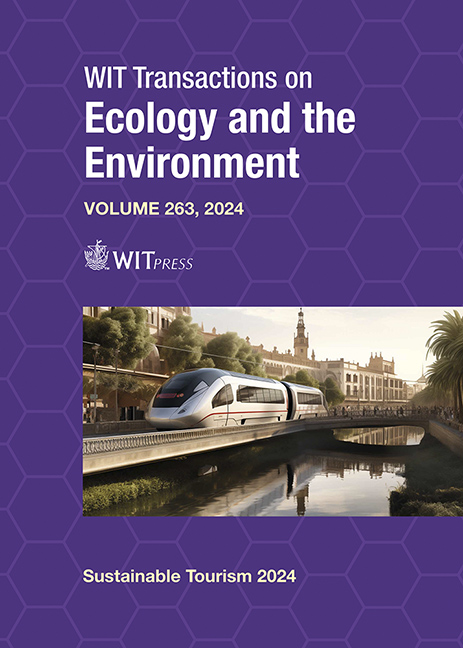EFFECTS OF LOCAL PLANTING ON THE URBAN MICROCLIMATE: A CASE STUDY IN A TOURISTIC CITY IN ITALY
Price
Free (open access)
Transaction
Volume
263
Pages
12
Page Range
107 - 118
Published
2024
Paper DOI
10.2495/ST240091
Copyright
Author(s)
ALESSANDRA CHIAPPINI, UMBERTO RIZZA, DILETTA BEVILACQUA, GIORGIO PASSERINI
Abstract
Urban heat island effects are increasingly impacting on the outdoor thermal comfort and human health in urban areas, showing the need for a wiser planning of the urban environment with specific attention to the presence of green areas. Nonetheless, in the past years, several Italian municipalities have removed many trees within urban areas mainly due to the fear of their possible collapse. This paper describes a case study in the coastal city of Senigallia, Italy, aimed at quantitatively assessing the effects of local planting removal on the urban microclimate, in terms of air temperature, predicted mean vote (PMV) and predicted percentage of dissatisfied (PPD) comfort indexes. The scenarios were modelled using ENVI-met, a holistic three-dimensional modelling software. Simulations were run for the summer period for which a comparison between the domain with and without greenery was carried out. Results show that during summer, the removal of trees significantly modifies the outdoor local microclimate. An average increase in ambient air temperature of approximately 2°C at a height of 1.5 m and in the central hours of a representative summer day was calculated. The comparison between the PMVs and PPDs also shows a substantial worsening of outdoor comfort conditions with an increase of 2 points in PMV values with respect to the case with urban green.
Keywords
ENVI-met, outdoor comfort, urban greenery, temperature





